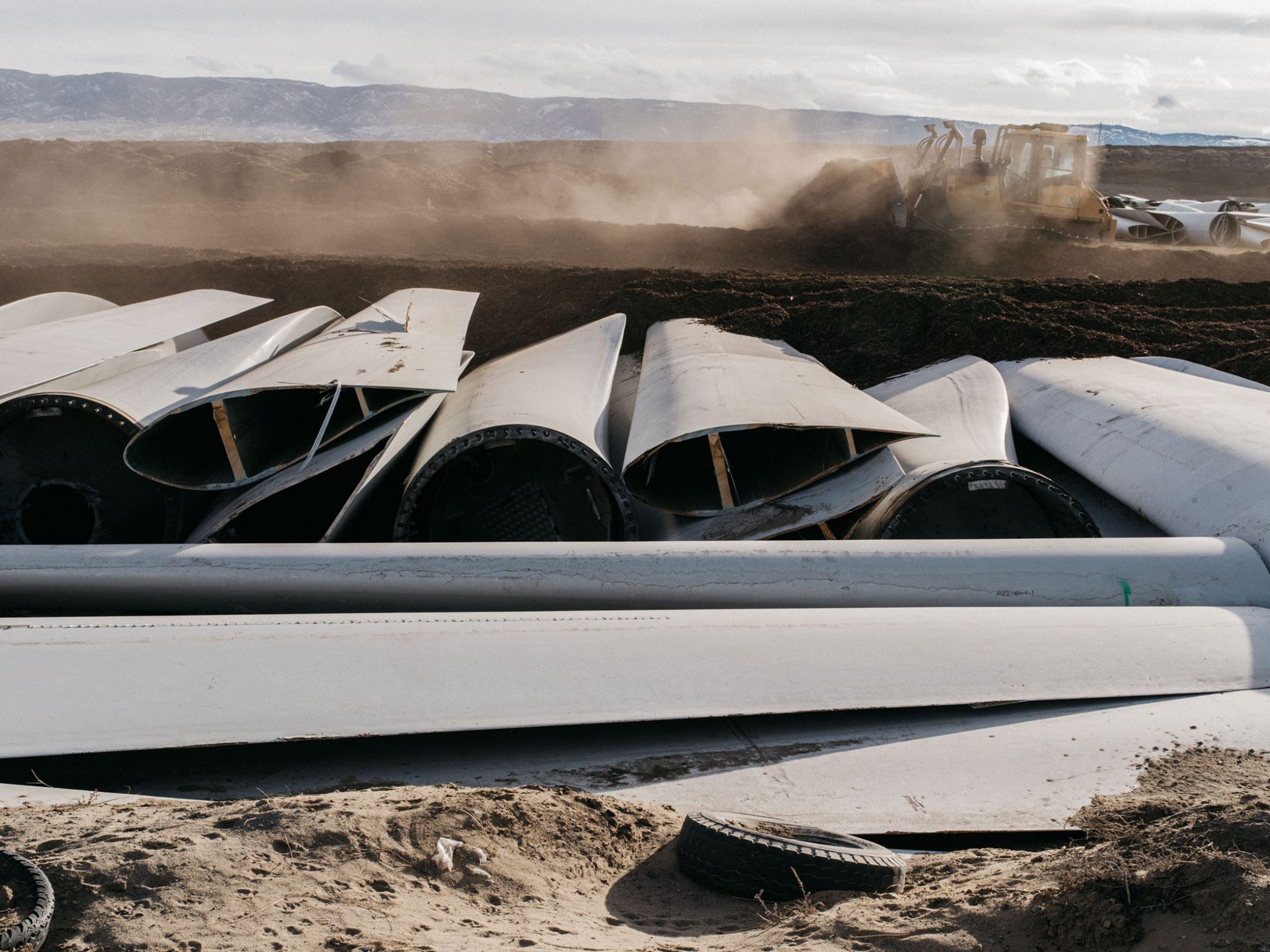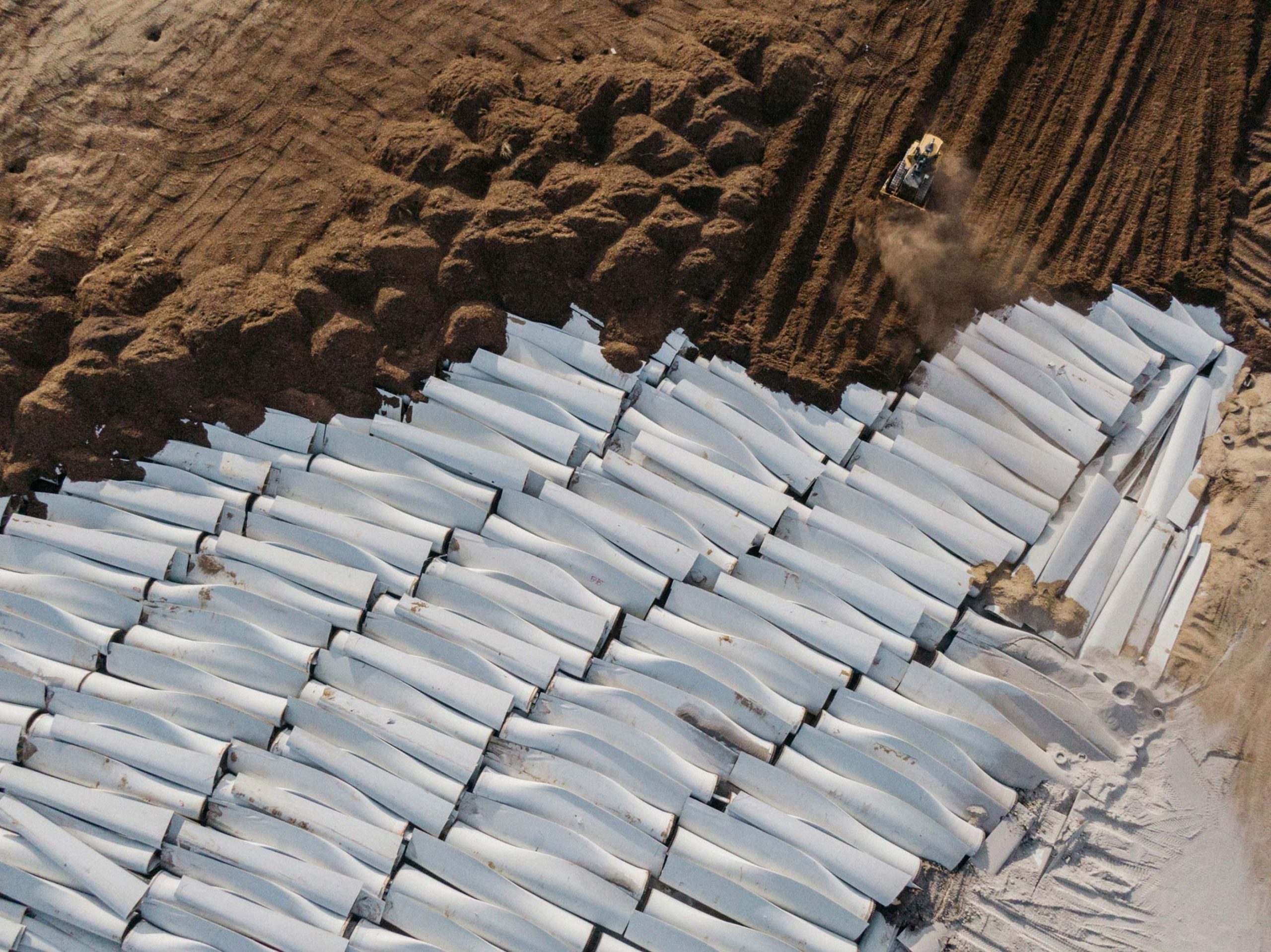We hear the constant dripping tap of the doomsters telling us we must embrace renewable energy, like wind. Quite apart from the bird mincing, the rare earth metal mining, the concrete, the noise pollution, the visual pollution, and their inefficiency, it turns out that they aren’t very green at all and can’t be recycled.
A wind turbine’s blades can be longer than a Boeing 747 wing, so at the end of their lifespan they can’t just be hauled away. First, you need to saw through the lissome fiberglass using a diamond-encrusted industrial saw to create three pieces small enough to be strapped to a tractor-trailer.
The municipal landfill in Casper, Wyoming, is the final resting place of 870 blades whose days making renewable energy have come to end. The severed fragments look like bleached whale bones nestled against one another.
“That’s the end of it for this winter,” said waste technician Michael Bratvold, watching a bulldozer bury them forever in sand. “We’ll get the rest when the weather breaks this spring.”
Tens of thousands of aging blades are coming down from steel towers around the world and most have nowhere to go but landfills. In the U.S. alone, about 8,000 will be removed in each of the next four years. Europe, which has been dealing with the problem longer, has about 3,800 coming down annually through at least 2022, according to BloombergNEF. It’s going to get worse: Most were built more than a decade ago, when installations were less than a fifth of what they are now.
This is the type of thing the facepalm emoji was invented for.

What do you do with non-recyclable renewable energy components?
Built to withstand hurricane-force winds, the blades can’t easily be crushed, recycled or repurposed. That’s created an urgent search for alternatives in places that lack wide-open prairies. In the U.S., they go to the handful of landfills that accept them, in Lake Mills, Iowa; Sioux Falls, South Dakota; and Casper, where they will be interred in stacks that reach 30 feet under.
“The wind turbine blade will be there, ultimately, forever,” said Bob Cappadona, chief operating officer for the North American unit of Paris-based Veolia Environnement SA, which is searching for better ways to deal with the massive waste. “Most landfills are considered a dry tomb.”
“The last thing we want to do is create even more environmental challenges.”

But that is exactly what they have done.
To prevent catastrophic climate change caused by burning fossil fuels, many governments and corporations have pledged to use only clean energy by 2050. Wind energy is one of the cheapest ways to reach that goal.
Except it turns out that wind is far from clean. Now even the blades are cluttering up landfills. Basically the entire industry is built on a fraud that it is clean. And the news gets worse: even disposing of them isn’t anywhere near green.
Wind power is carbon-free and about 85% of turbine components, including steel, copper wire, electronics and gearing can be recycled or reused. But the fiberglass blades remain difficult to dispose of. With some as long as a football field, big rigs can only carry one at a time, making transportation costs prohibitive for long-distance hauls. Scientists are trying to find better ways to separate resins from fibers or to give small chunks new life as pellets or boards.
Bloomberg
The inconvenient carbon footprint of large trucks to haul them away, and one can only imagine the chemicals being investigated to separate resins from fibres.
Dirty, dirty wind turbines. Tell me again, James Shaw, why wind turbines are so clean.

